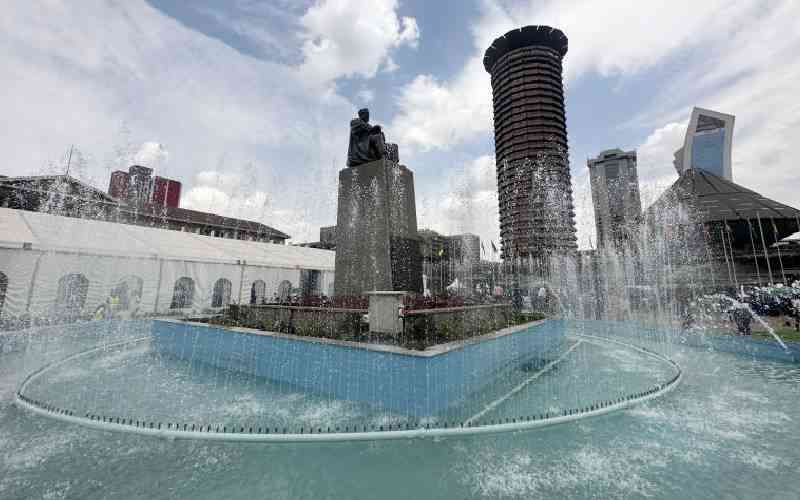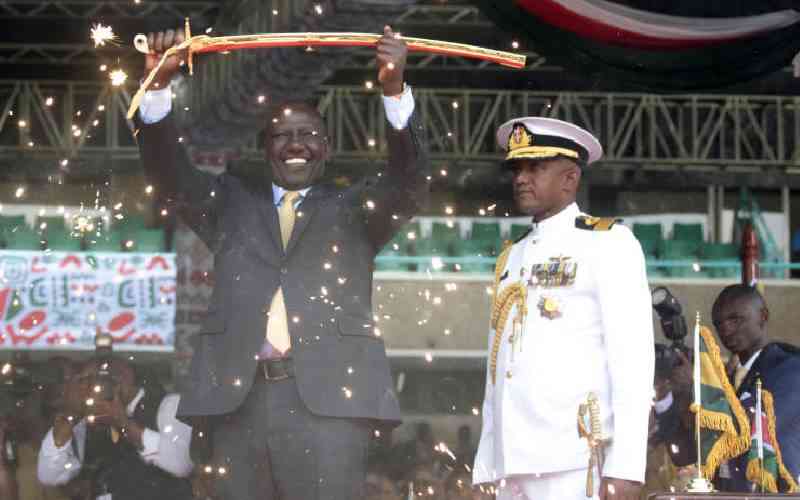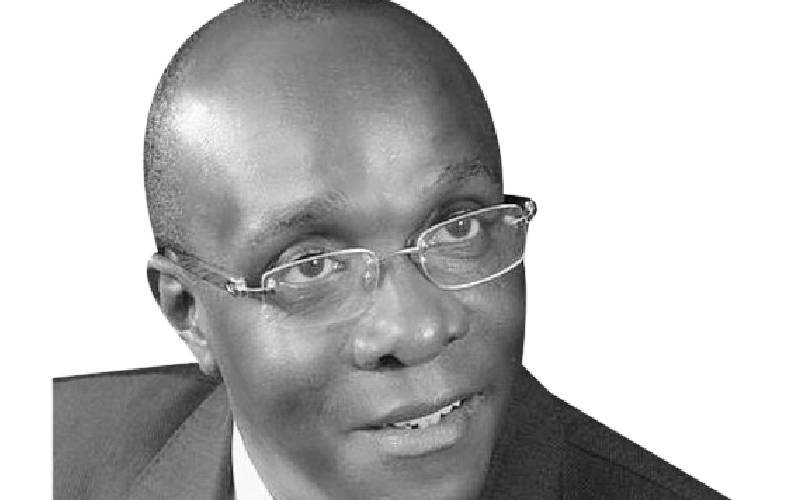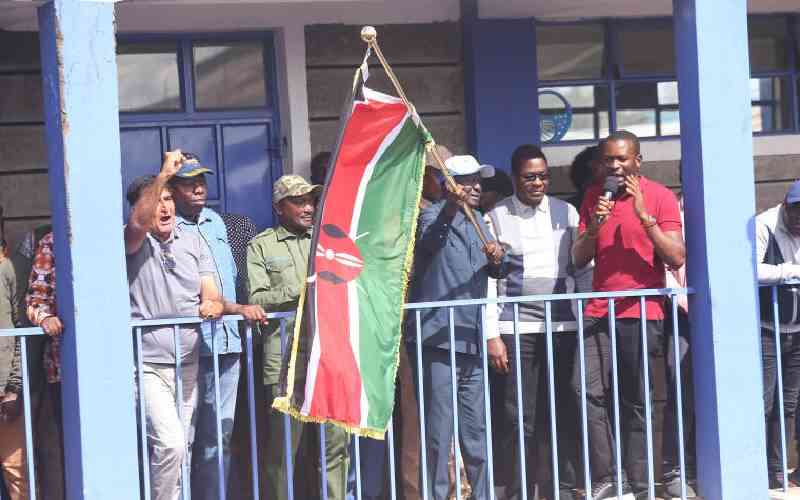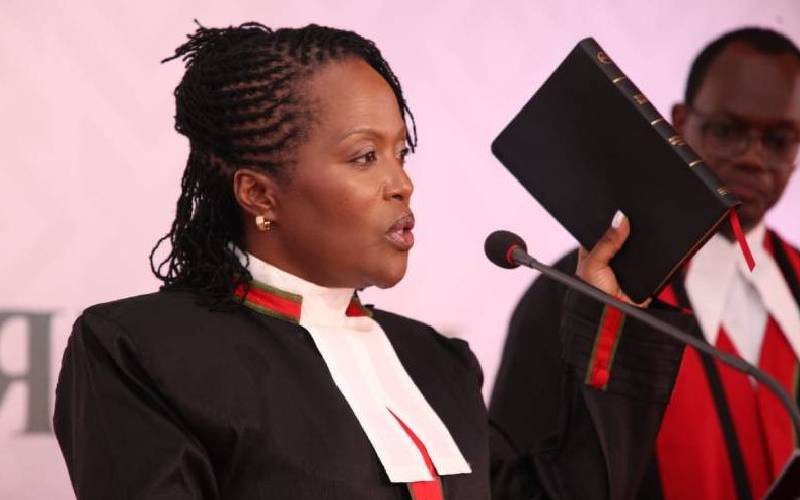By Peter Opiyo
The 224 Members of Parliament will move to the refurbished state-of-the-art new Chamber this month.
This follows the completion of major works at the 400-seater new Chamber that has been undergoing refurbishment for the past three years.
Clerk of the National Assembly, Mr Patrick Gichohi said electrical works at the Chamber are being finalised and that the Chamber would be ready for occupation before the end of the month.
“We are working on the final touches and the MPs would be able to move to the new Chamber before the end of this month,” said Mr Gichohi. The refurbishment has been done at a cost of Sh920 million.
The MPs have been using the old Chamber, which can hardly accommodate 150 MPs, since the refurbishment works began in 2010.
The picturesque horse-shoe design comes with the state-of-the-art technology, including a public address system, electronic voting system and computer monitors.
Speaking to The Standard from Arusha, Tanzania, where he formally presented the names of elected East African Legislative Assembly members, Mr Gichohi said already members of staff are undergoing training on electronic voting, under the stewardship of experts from Germany.
“We are getting prepared to handle the facilities that come with the new Chamber and some of our staff are already going through in-house training on electronic voting. Experts from Germany are overseeing the training,” said Mr Gichohi.
The new-look Chamber is set to give members greater sitting space, ambience and personal comfort, with specially designed slots for persons with physical disabilities.
It also caters for live broadcast of parliamentary proceedings and the anticipated increase of members following the creation of 80 additional constituencies and the 47 women representatives from the counties.
The horse-shoe design borrowed from the German Bundestag and the Dodoma-based Tanzanian Parliament, has between 350 and 400 individualised seats for MPs, and 20 mobile seats to cater for any eventuality.
The retractable seats, which cost Sh200,000 each, would be numbered and labelled with the MPs' names.
Apart from the MPs, there is a seating capacity of 600 in the media, public, diplomats' and Speaker's galleries. Mr Gichohi, said the project has been concluded within the set budget.
He said the horse-shoe model was informed by the need for every member to have equal access and catch the eye of Speaker during House business.
Stay informed. Subscribe to our newsletter
"The model is like the German Bundestag (Parliament) which is closer to horse-shoe so that every member can get access to the Speaker," said Gichohi.
Unlike the current arrangement where members have to stand to catch the attention of the Speaker, the new Chamber has electronic buzz buttons, which members would press to alert the Speaker whenever they want to contribute to the business of the House.
And the Speaker will no longer have to shout himself or herself hoarse with the formal Order! Order! warning and reprimand at disorderly members.
Once he or she overrules a member, the Speaker would go ahead and disconnect the communication system, centrally controlled from his or her desk.
This cuts off the member from being heard in the House. This will target those who breach the House rules such as making false allegations and raising frivolous Points of Order.
Shedding off the traditional norm where no electronic gadget is accessible while in the Chamber, every seat is installed with a computer monitor where the MPs can follow the proceedings. The monitors will also enable intra-communication within the Chamber.
Among the models that the Parliamentary Service Commission toured, while searching for a suitable model were Irish, South African and Indian Parliament as well as the British House of Commons.
The desire to refurbish the Chamber was informed by the need to transform it into an ultra-modern Parliament with state-of-the-art facilities and to also increase its seating capacity.
Since Parliament is a protected building, its exterior design has not been interfered with, which is why only the interior was refurbished.
It is against the law to interfere with the exterior design of the building. Other protected buildings are State House and State Lodges.
 The Standard Group Plc is a
multi-media organization with investments in media platforms spanning newspaper
print operations, television, radio broadcasting, digital and online services. The
Standard Group is recognized as a leading multi-media house in Kenya with a key
influence in matters of national and international interest.
The Standard Group Plc is a
multi-media organization with investments in media platforms spanning newspaper
print operations, television, radio broadcasting, digital and online services. The
Standard Group is recognized as a leading multi-media house in Kenya with a key
influence in matters of national and international interest.
 The Standard Group Plc is a
multi-media organization with investments in media platforms spanning newspaper
print operations, television, radio broadcasting, digital and online services. The
Standard Group is recognized as a leading multi-media house in Kenya with a key
influence in matters of national and international interest.
The Standard Group Plc is a
multi-media organization with investments in media platforms spanning newspaper
print operations, television, radio broadcasting, digital and online services. The
Standard Group is recognized as a leading multi-media house in Kenya with a key
influence in matters of national and international interest.


